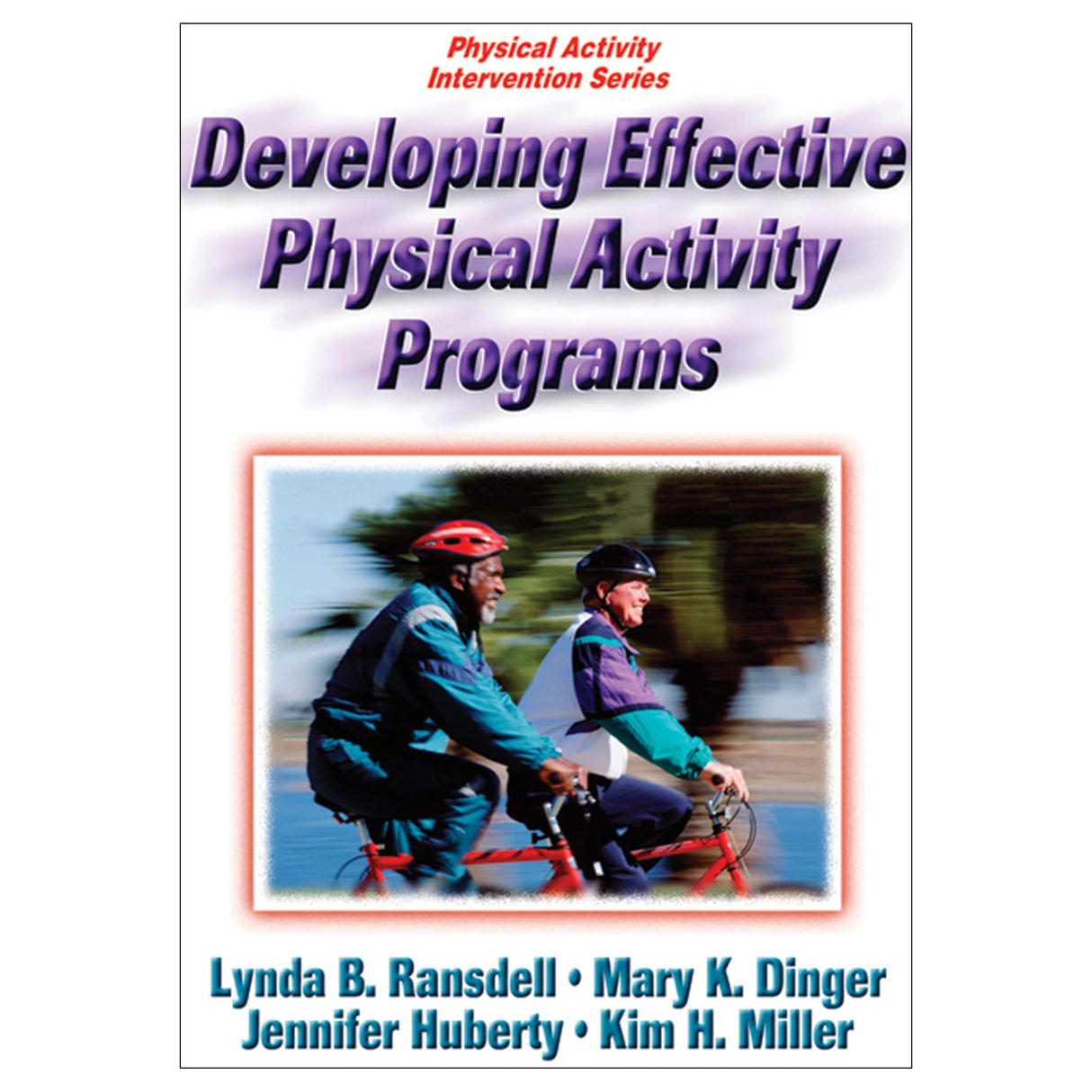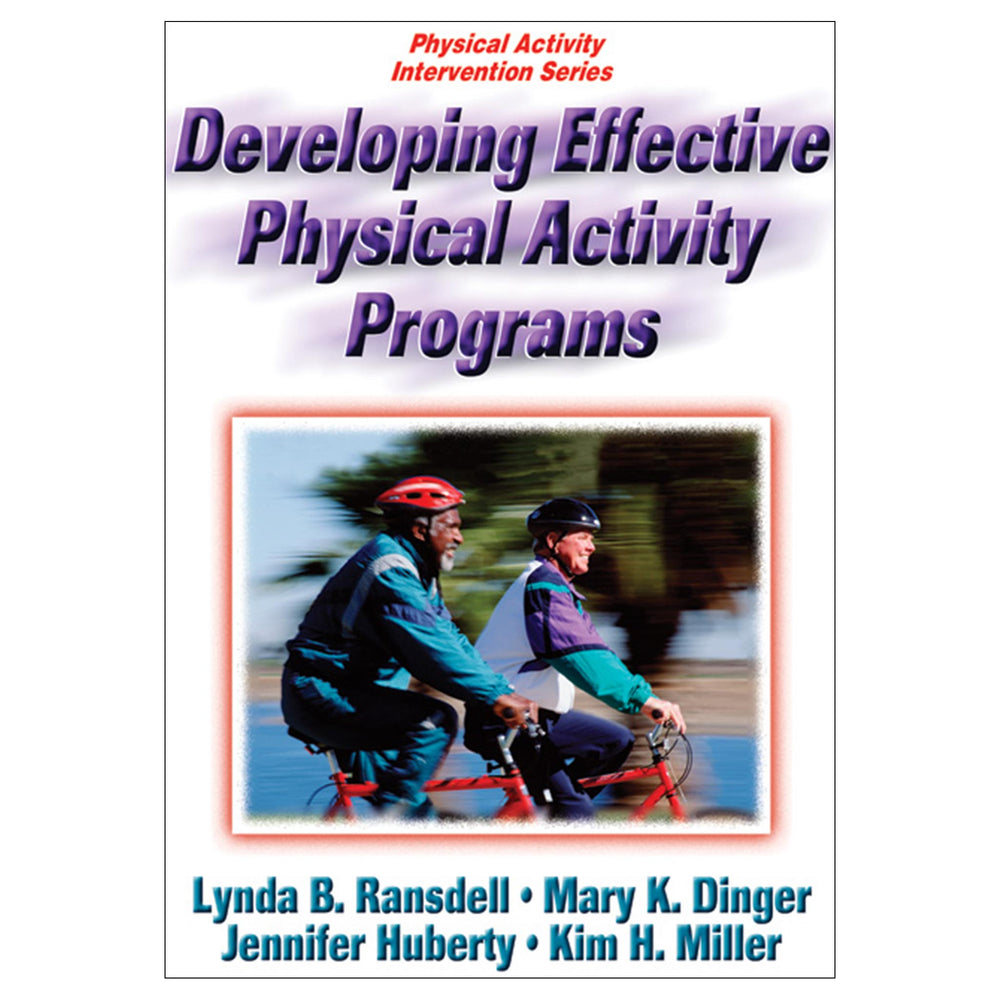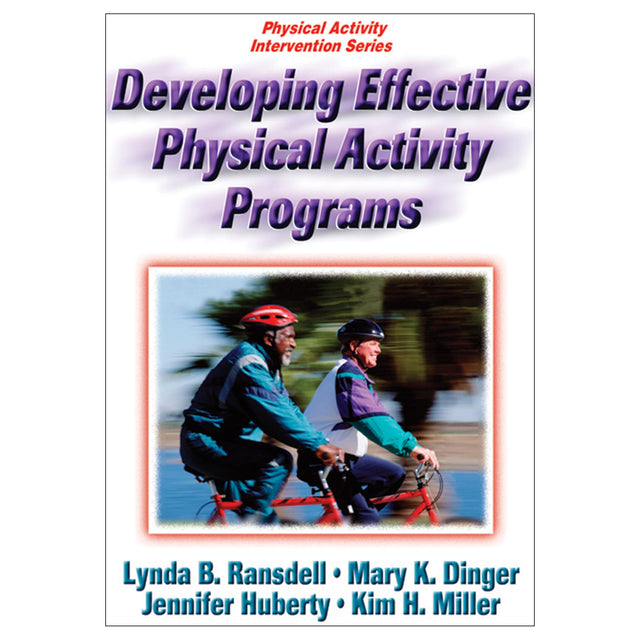Developing Effective Physical Activity Programs
$65.95 CAD
Developing Effective Physical Activity Programs emphasizes the move away from a one-size-fits-all approach to physical activity interventions by providing evidence-based recommendations for designing, implementing, and evaluating more effective and appropriate physical activity interventions for diverse populations. Part of Human Kinetics' Physical Activity Intervention series, the book provides research, methods, techniques, and support to health professionals seeking ways to promote physical activity programs that meet the specific needs of women, overweight and obese populations, older adults, and ethnically diverse populations—those shown as most likely to be sedentary and in need of the benefits of physical activity interventions.
Developing Effective Physical Activity Programs offers background information to guide the planning process:
-Physical activity recommendations for adults from various federal agencies and professional organizations, including the Centers for Disease Control and Prevention, the U.S. Department Health and Human Services, and the American College of Sports Medicine
-An overview of scientific literature, which serves as a foundation for the physical activity recommendations
-Detailed information regarding the four cornerstones of physical activity promotion: needs assessment, program planning, program implementation, and program evaluation
-Descriptions of various physical activity measurement techniques and factors to consider when choosing one of these techniques
The authors explain how careful consideration of the needs of specific populations can increase the success of physical activity interventions. They present evidence-based recommendations for working with various populations. Key considerations are discussed for each population, including the elements that make up the most successful interventions, unique barriers, and techniques for overcoming those barriers. Helpful tables summarize the barriers and solutions for each group, providing quick reference for designing programs.
The final section of the text examines how the built environment, setting, and technology can influence intervention planning. You'll look at the ways in which neighborhood and community design can affect a person's physical activity levels. You'll also consider the various settings in which a program can be held, including homes, churches, and worksites, and how those settings will affect your program. This section also shows you how technology, such as Web- and phone-based interventions and podcasts, can be used to expand the reach of your program and positively influence the physical activity levels of participants.
Throughout the book are summaries of current research studies examining physical activity interventions in various populations and settings along with descriptions and examples of successful programs and explanations for their success. In addition, each chapter concludes with helpful checklists that provide recommendations for developing and implementing physical activity interventions in various populations and settings.
Unique in its comprehensive coverage of special populations, Developing Effective Physical Activity Programs shows practitioners how to answer the physical activity needs of each client or client group, address issues relevant to sedentary populations, and offer viable physical activity programs to improve the lives of the unique individuals they serve.
Developing Effective Physical Activity Programs is part of the Physical Activity Intervention series. This timely series provides educational resources for professionals interested in promoting and implementing physical activity programs to a diverse and often resistant population.
Audience
Reference for public health professionals, health promotion specialists, exercise physiologists, and fitness professionals who design, implement, and evaluate physical activity interventions. Also a resource for recreation and community centers and a supplemental text for physical education and health promotion curricula.
Part I: Thinking About the Foundations of Physical Activity
Chapter 1: Promoting and Maintaining Health Through Physical Activity Recommendations
Chapter 2: Planning and Evaluating Physical Activity Programs
Chapter 3: Measuring Physical Activity
Part II: Working With Specific Populations
Chapter 4: Interventions for Women
Chapter 5: Interventions for Obese and Overweight Individuals
Chapter 6: Interventions for Older Adults
Chapter 7: Interventions for Ethnically Diverse Populations
Part III: Considering the Variables
Chapter 8: Increasing Physical Activity Through Environmental Approaches
Chapter 9: Increasing Physical Activity by Considering the Setting
Chapter 10: Effectively Using Mediated Programming





